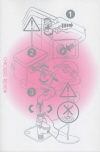Chicago Review – Winter 2013
Chicago Review is “an international journal of writing and critical exchange published quarterly.” And they are not falsely advertising; it really is just that. This issue is jam-packed with fiction, nonfiction, poetry, and discourse on ecopoetics that takes the reader around the globe in 218 pages. From first page to last, the reader is kept engaged and moving. If anyone is looking for a reference on how to organize and put together a journal, this issue of Chicago Review is it.
Chicago Review is “an international journal of writing and critical exchange published quarterly.” And they are not falsely advertising; it really is just that. This issue is jam-packed with fiction, nonfiction, poetry, and discourse on ecopoetics that takes the reader around the globe in 218 pages. From first page to last, the reader is kept engaged and moving. If anyone is looking for a reference on how to organize and put together a journal, this issue of Chicago Review is it.
The short story “Entourage” by Helen DeWitt is told from a third person limited point of view. The story works to show the main character’s disinterest in everything he does, no matter how extravagant. The main character is a delusional rich man. Throughout the piece the reader encounters short, concise sentences that reflect the main character’s disinterest: “He went to Krakow for no particular reason.” And “His Life was quite difficult at this time for reasons we need not discuss.” The perspective also helps to keep the reader at bay from any emotions the main character may be feeling. Any time the reader might begin to understand the man on a more personal level, the reader is interrupted by facts in order to quickly reestablish distance. At one point, the man excitingly begins to daydream about a new business franchise: “ . . . Skipping up and down, he wears a bow tie. Studies have shown that a talent for delaying gratification is integral to success in our complex society.”
In a translation of “Seven Against Thebes: Three Choral Passages,” originally penned by Aeschylus in 467 B.C., John maintains an increasingly sexual, chant-like, and warlike tempo throughout, giving the reader a sense of urgency as preparations for war are made. The first stanza of the poem serves as a thesis for the rest, telling the readers where they will be taken:
The empty house,
inhuman and strange,
there in premonition.
The Furies descend,
called by desire,
by a mindblind Oedipal curse.
They’ve come for the children.
Tipton tells the reader of the impending “Furies” called by a desire, an “Oedipal” curse that resulted in children. Toward the end of the poem is a violent, sexual intensity:
Come. Come. Come. Come.
Hear the rattle of chariots.
Come, queen Hera.
Axles scream on the frames.
Come, good Artemis.
Spearshook air. A mad shudder.
What will the city suffer?
What do the gods intend?
Tipton has laid out this piece so that a reader with or without background knowledge in ancient Greek history or mythology can still fully appreciate the work.
There are several nonfiction pieces in the issue and all lean toward the scholarly side of nonfiction versus creative nonfiction. One of these essays is a translation by John Hoffman, “Introduction to Rhyme: Its History and Theory” originally written by Viktor Zhirmunsky. This essay brings to surface issues that arise within definition of rhyme as well how and why translation can affect rhyme. There are also a couple of essays on ecopoetics and several reviews that are worth checking out.
Martha Ronk’s “A Photograph of Shadows and A Side Window” at first glance looks like prose, but upon a close examination the reader can tell the piece is not; Ronk is communicating something with the prose-like format. Ronk uses this format to drive home the point of her poem: things aren’t always what they seem. Is it art or an artifice:
an eternal return located in its technological reproducibility
its time repeating, its grasses and the feeling of grass, never simply itself,
but moving forward as walking across it to get to the window
and the rarity of seeing oneself in the glass reflection by chance
and wondering how she got out of the place she’s usually in
The line breaks work to create a sense of monotony, which the “she” in this piece seems to be feeling as well. This sense of monotony does not hinder the poem though, nor does it deter the reader; it works with the poem to engage the reader.
There is no way I could sum up everything in this issue of Chicago Review, but there is something in it for everyone.
[humanities.uchicago.edu/orgs/review]





